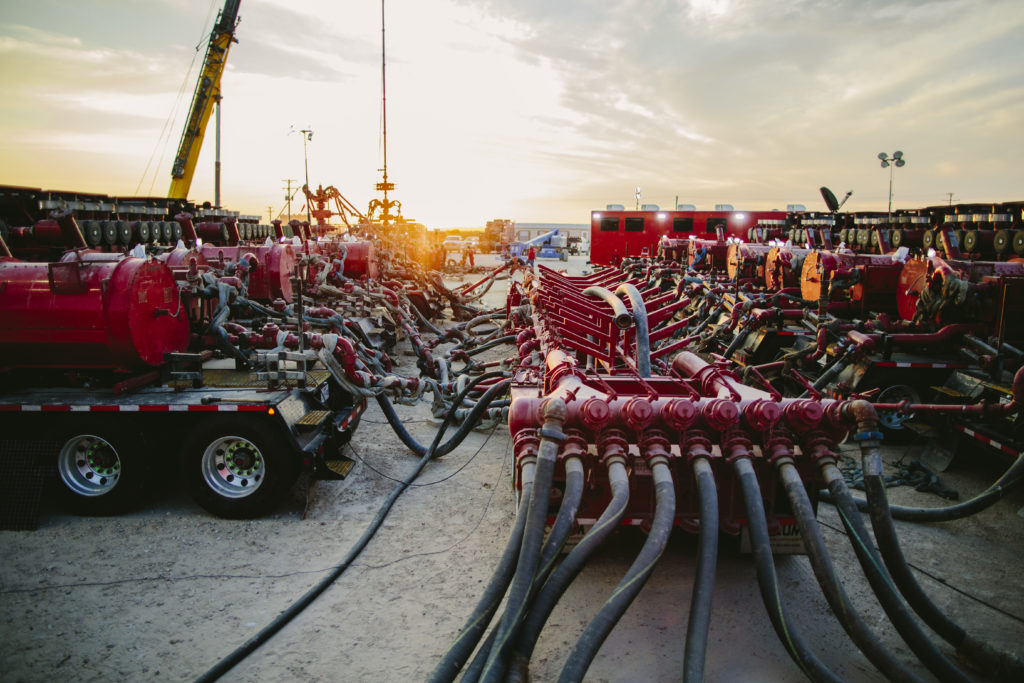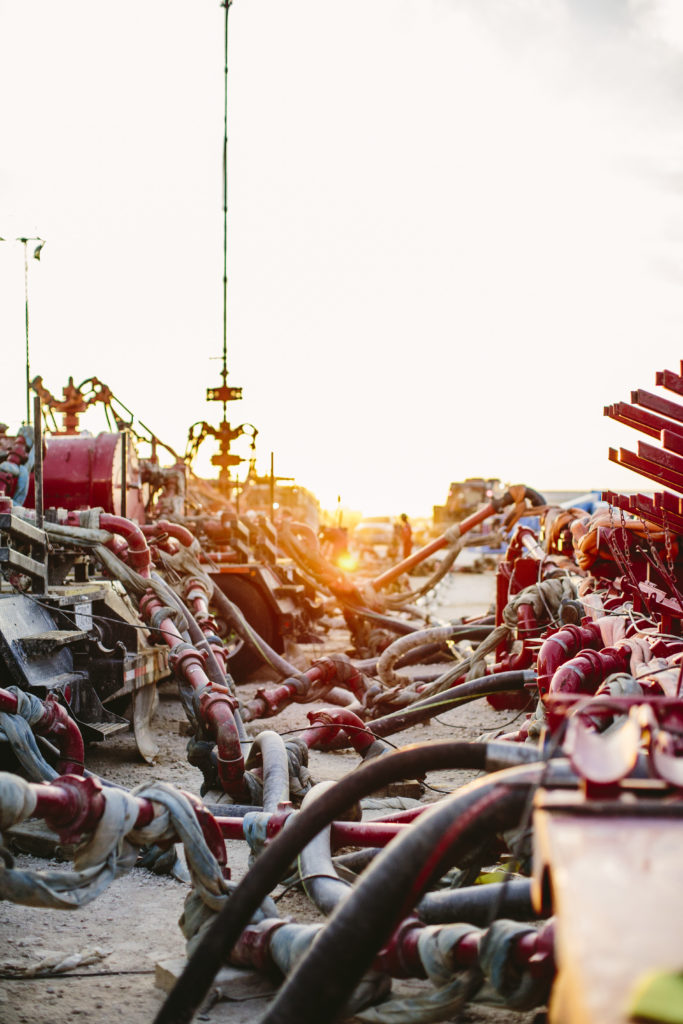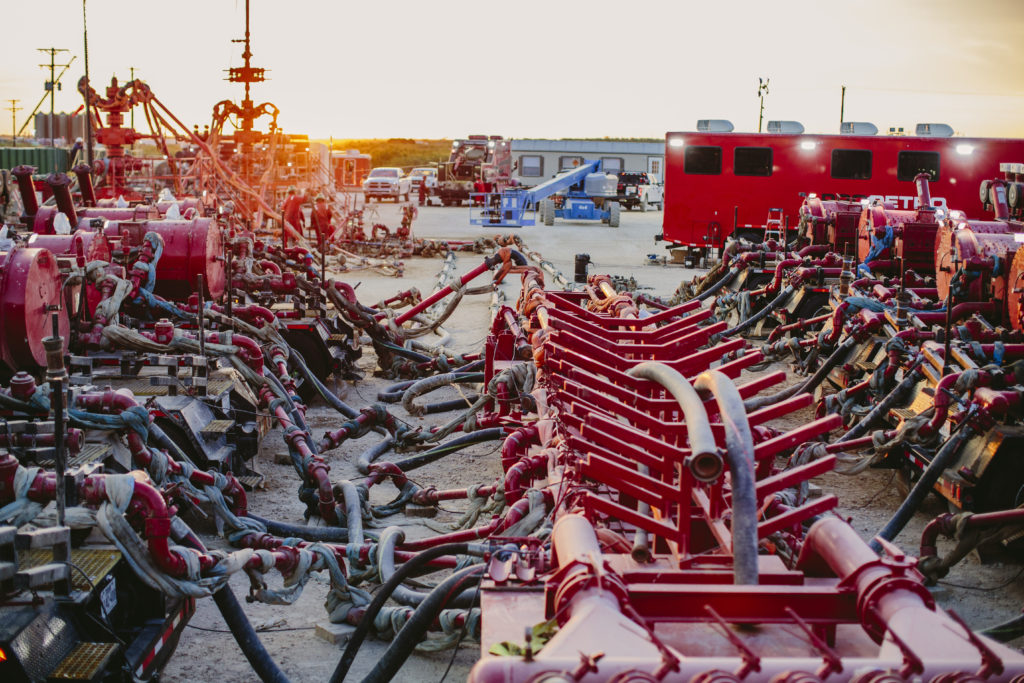The year 2019 began with the the frac industry under pressure as a whole, and pressure pumpers were no exception. A sudden oil price drop in December, coupled with downward pricing impetus from backlogged pipelines and year-end budget exhaustion led to a drop in completions—and a freefall in demand for fracturing crews and frac sand.
In fact, said Cudd Energy Services General Manager Clint Walker, DUCs (drilled-but-uncompleted wells) nationwide had ballooned to 8,000 by year’s end, with about half of those in the Permian.
A boom in Permian Basin activity earlier in 2018 was a mixed blessing, said Walker. The boom offered more work for established companies like Cudd, but also enticed new competitors to hit town like California gold drew forty-niners.
“In my world, the frac world, we had supply-and-demand fundamentals come into play. We had too many frac crews for the amount of work that was available,” said Walker.
“In the case of the sand mines, on a very conservative model, [there is] 40 million tons per year of total sand demand in the Permian. of which half ofis 100 mesh—and that’s the majority of what the regional sand mines are producing. The number in October [2018] was about 70 percent in-Basin sand, and that number will probably increase.” With 19-plus sand mines coming online in the Basin in 2018 alone, Walker feels oversupply is inevitable, and he expects sand prices to fall down to break-even levels soon, if they haven’t already.
Walker says the hot activity in the Permian has attracted extra competition, in part because of private equity money. “The ready availability of capital that has been deployed into the service space” is based on the fact that, historically, there have been high returns in the service sector when oil prices are high and activity is hopping. But Walker sees new challenges there because “these cycles seem to be shorter and happening more often. That’s frustrating for someone like ourselves that are in the business for the long haul and trying to maintain capital discipline.”
In short, there is currently an oversupply of both frac sand and pressure pumpers who use that sand. It’s hard to stay in business in such a scenario.
E&P companies put price pressure on service companies—in a situation that Walker says is no secret. “What we do has become the majority cost of the well cycle now—we’re over 60 percent of the well cycle [cost],” he said. “That’s where their biggest cost savings are going to be, so they’re going to attack that any way they can.”
Lower prices for sand and pressure pumping have not boosted completion activity in Walker’s view, but they have made wells that are being drilled and completed more cost-effective. Use of local sand has been estimated to save $400,000-$500,000 per well, but Walker says there is controversy about whether brown sand’s long term production is equal to that of the higher crush Northern White. He noted that further analytics are needed because right now local sand has only been in use for about a year.
“That’s a real issue, and there are analytics that will evolve as time goes on,” he said, adding, “It’s too early to tell.” The answer, however, will determine the type of sand used in completions for the foreseeable future.
ProPetro’s CEO, Dale Redman, also sees a lag in profitability along with other challenges in today’s market. “All of us have to realize the E&P companies drive the bus, and the rest of us are glad to be on board and trying to get to the same destination.”
Today’s rapid price swings are a particular challenge to profitability and to planning. “I’ve been in this business 40 years,” Redman said, “and I’ve never seen a time where you literally can plan your business long-term with your customers in a collaborative fashion.”
But uncertainty may be forcing a change for the better. “The old paradigm used to be, when the service company could, they would take advantage of the producer—and when the producer could take advantage of the service company, they would. But with the new manufacturing mode of development that’s going on out here, there’s really no need to have that old way of doing business.”
Now, he said, the goal for both parties is for ProPetro to become a vendor of choice, rather than for the producer to price shop to cut costs.
As recently as 2014 the company’s business involved about 90 percent vertical fracs. The ensuing commodity price collapse, said Redman, was what began the drive to greater cost efficiency, opening the door to horizontal and multipad drilling.
“Now, we’ve got to have 45-50,000 horsepower on location in 24-hour/seven-day-a-week operations with multi-well development per pad. It’s basically changed the horsepower need and changed the model,” he said. “We’re in full-blown manufacturing mode.”
One thing ProPetro has done to insure its future was the November 2018 purchase of the pressure pumping assets of Pioneer Natural Resources, a longtime customer. The purchase involved $400 million in cash and stock, helping Pioneer become a pure-play company.
“We went through a process with Pioneer back two-and-a-half years ago when they had a number of folks vying for that work,” Redman explained. “We had the good fortune, with the performance of our people on location and our equipment, that we were awarded a one-year contract with Pioneer” at that time. Since then, “through a dedicated fleet, we’ve had that work—I think we were the only third-party frac company frac’ing for them for two-and-a-half years, outside of their own equipment.”
Selling the rest of that operation to ProPetro allowed Pioneer to focus time and money on resource development instead of spreading it out to equipment and services.
“I think they got pretty comfortable that we were the partner and the stewards that they wanted to turn those assets over to,” Redman said. The purchase involved people and equipment—and the employee integration has had understandable challenges—but Redman is pleased with the progress in the first few months.
The deal includes ProPetro having a 10-year contract to work for Pioneer, with a guaranteed level of payback over the first four years.
Redman and Walker both see a conversion from diesel power to electricity produced by site gas as the next step in efficiency for pressure pumpers.
“I really think that the next big step in what we do will be converting to electric fleets—with central power generation driving electric motors on these pumps,” said Walker. “What’s interesting about that is the fuel savings that you derive from running an electric fleet. You’ve got power generation units that can run [on] all types of hydrocarbon sources, but one of the biggest and most readily available on a lot of these pad sites is the field gas.” Cost savings there approach 90 percent compared to trucking diesel to the site as is the most common method currently.
Redman noted that ProPetro is also very actively transitioning toward electric power. “There are already some electric fleets that have entered the Basin. There’s going to be a big step change over the next several years,” he said.
Walker added that a ripple effect from this change will involve retraining or rehiring onsite personnel. “Instead of having diesel mechanics onsite, you have to have electrical engineers. It’s just a different ballgame.”
Walker credited zipper fracs with huge gains in productivity as well. “Zipper fracs have allowed us to frac two wells at the same time.” The drilling crew plans their schedule so that, as Cudd finished frac’ing one well, the next one is ready for Cudd to start on, side-by-side, immediately.
That’s great for efficiency but there are consequences to uninterrupted pumping. Cudd is revamping its pump fleet, said Walker, to “take on the demands of longer pump times, higher treating pressures” and other stresses. “True continuous duty” is how Walker defined today’s pressure pumping demands, which takes a huge toll on equipment.
He related that a pump manufacturer’s rep came and saw Cudd was running one of the manufacturer’s 2,500-horse pumps continuously on the job site. In light of that, the manufacturer’s rep downrated the pump to 1,100 horsepower. “You have to run it a lot slower and you have to have redundancy.
Walker feels the laws of physics have about reached their limits regarding greater pumping efficiency. “We’re up against a wall,” said Walker. “You can pump 24 hours a day, but physics become involved and you start going down a certain ID (inside diameter) of pipe at a certain rate, at a certain pressure. Those are finite—you can’t get any more” through the pipe.”
With the continued drive for technology, can driverless trucks be far behind? Walker said that, while his company has had discussions about this, he feels implementation is yet a good distance in the future.
Automation has already reduced the number of people onsite at drilling rigs through use of electricity and remote controls, Redman noted. “You’ll never be able to replace the human element, but you’re going to see more and more computerization come into play in how we monitor, how we efficiently allow some of these mechanical applications” take over menial tasks formerly done by humans.
While automation is not an unmitigated blessing, Redman sees advances in safety and efficiency as the benefits. Simply reducing the number of people on the dangerous Permian Basin roads is making the work environment safer.
Will Q4 2019 and the opening of new pipelines lead to more completions—and greater demand for sand and related services? Like sand through an hourglass, only time will tell.
Paul Wiseman is a freelance writer in Midland.













